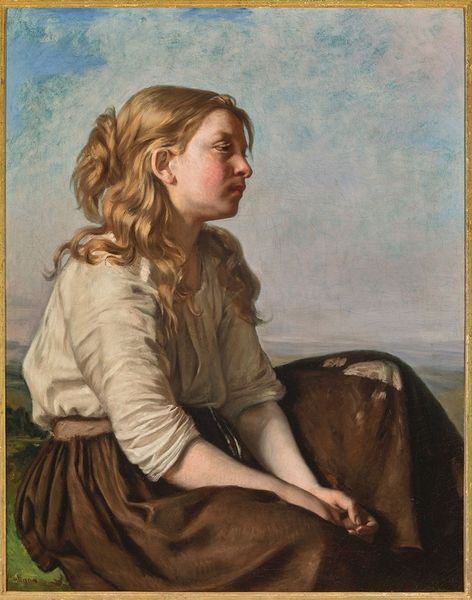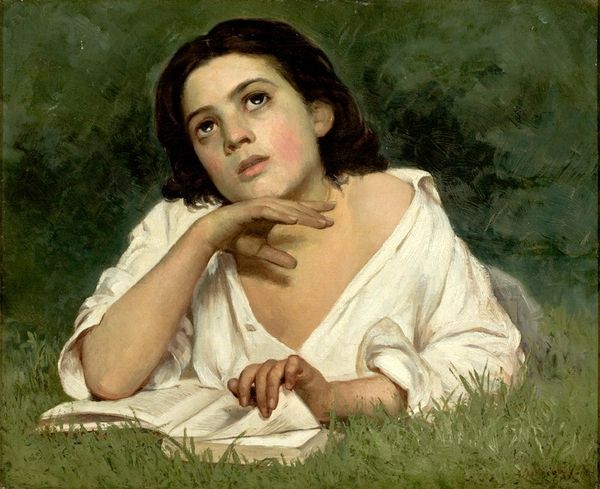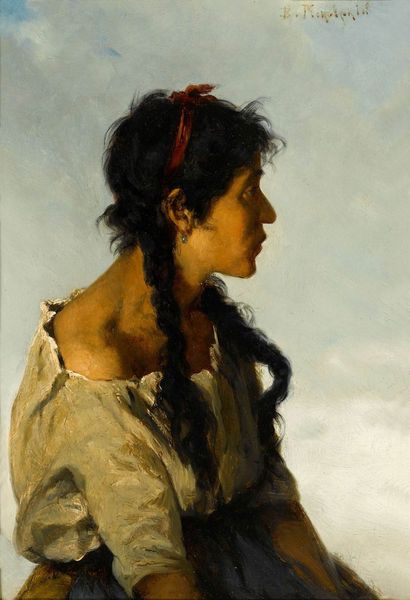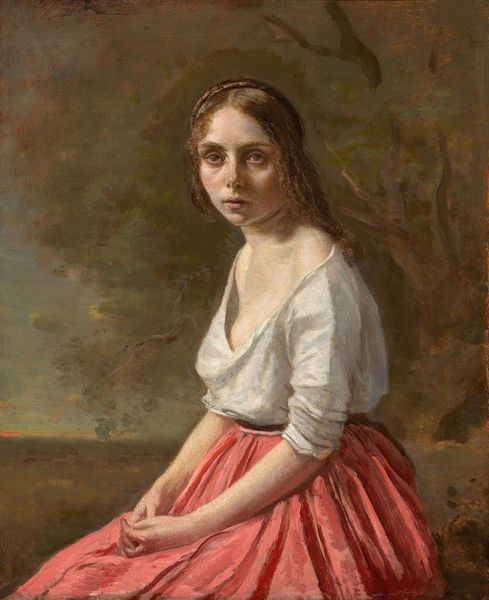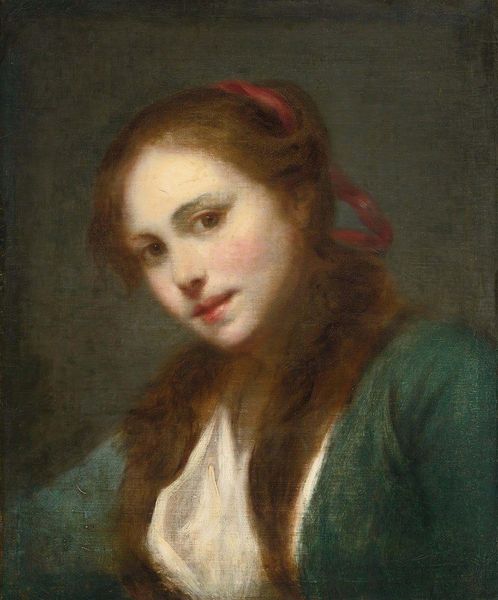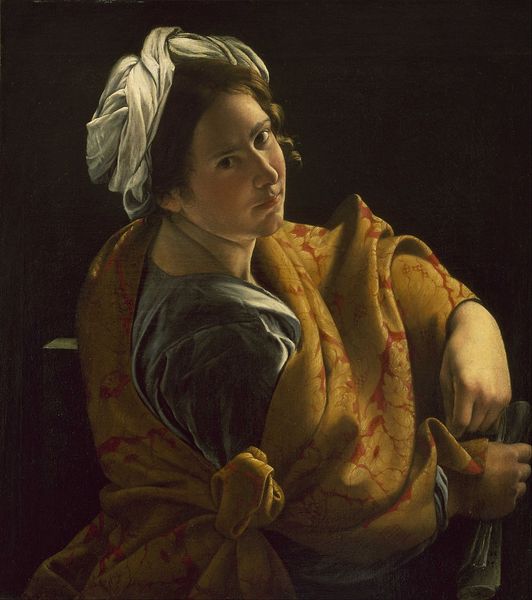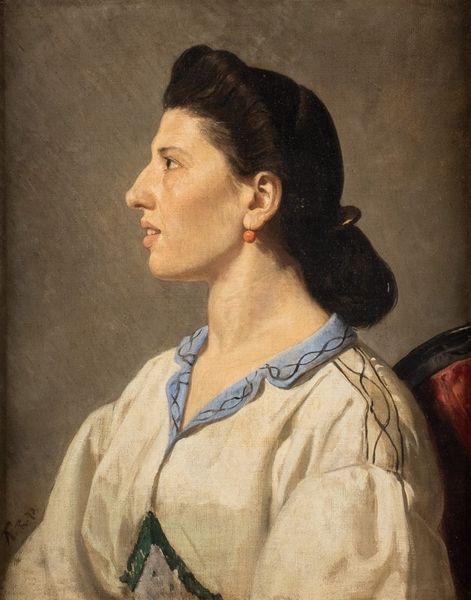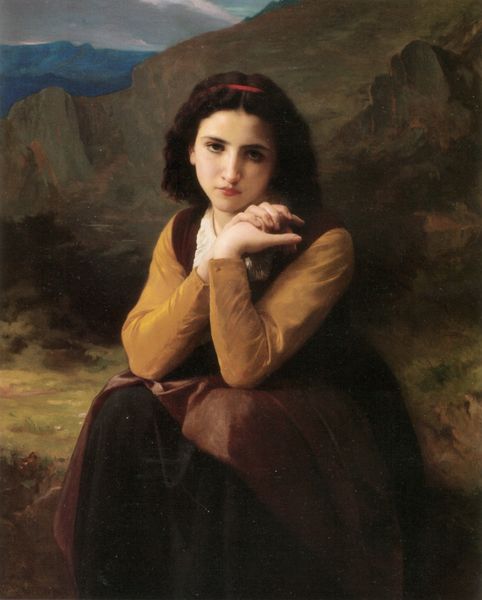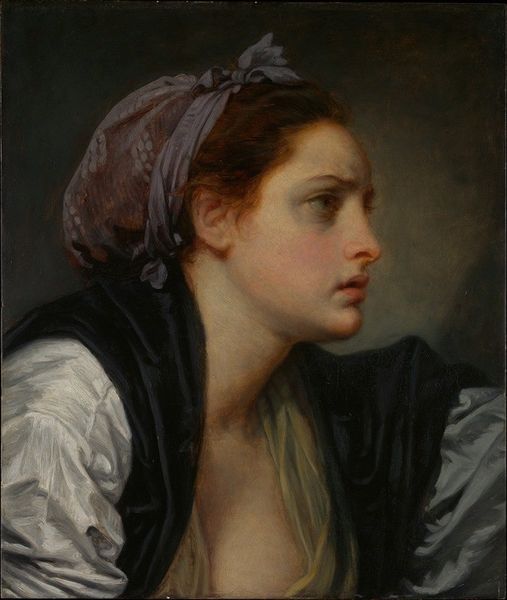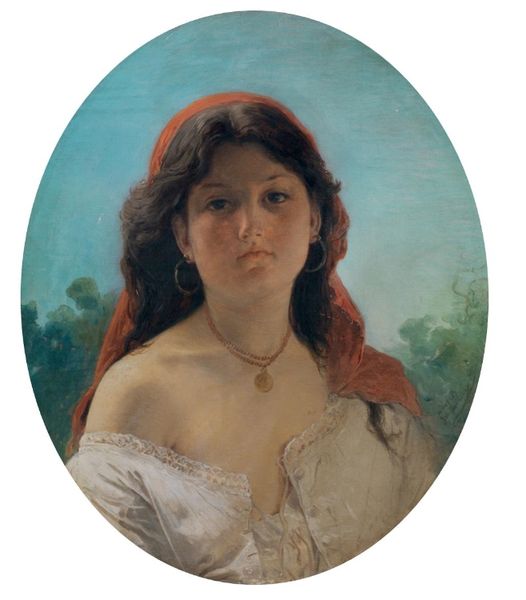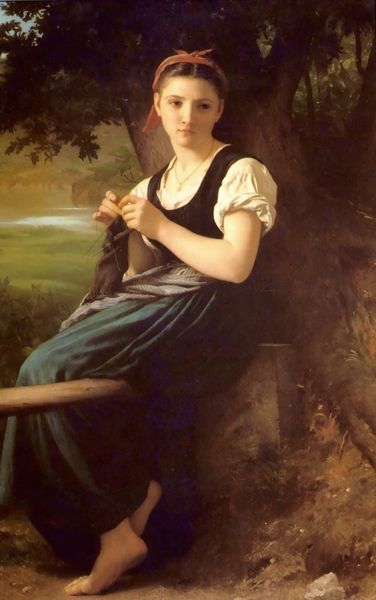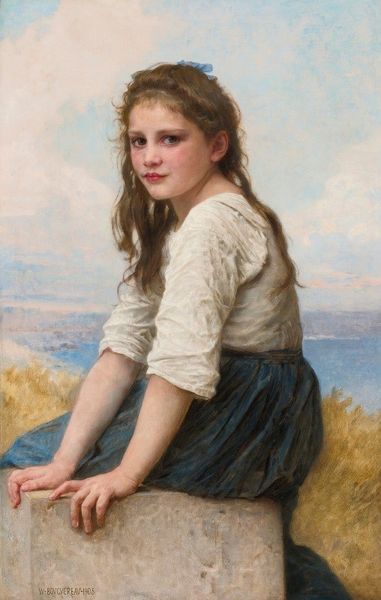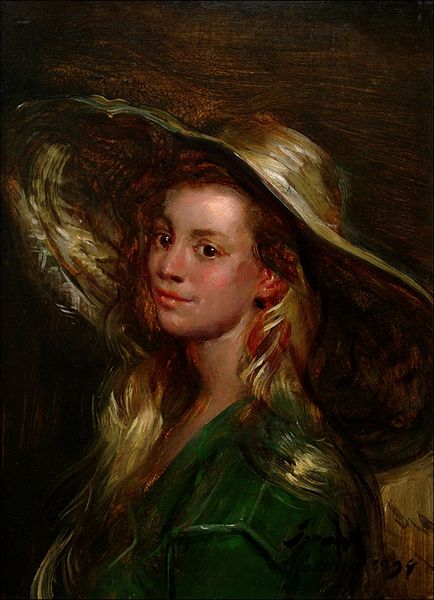
painting, oil-paint
#
portrait
#
narrative-art
#
painting
#
oil-paint
#
figuration
#
oil painting
#
romanticism
Dimensions: 66 x 54 cm
Copyright: Public domain
Editor: So, here we have Eugène Delacroix’s “The Orphan Girl at the Cemetery,” painted in 1824. The oil painting strikes me as quite haunting, capturing a sense of vulnerability and isolation. How do you interpret this work? Curator: It’s compelling, isn't it? Consider the gaze. The averted eyes, the slight blush... what do those say to you, given the cemetery setting? Editor: It feels like she's looking away from something painful, or perhaps she's caught between grief and… something else? Curator: Precisely. Her upward glance can be viewed as an upward spiritual gesture; that she is contemplating transcendence, which contrasts to the tombstones below, a powerful visual metaphor. Delacroix often used these symbols to evoke deep emotions and psychological states. Editor: So, the cemetery itself isn't just a location, but a symbol? Curator: Indeed. It embodies loss, memory, and perhaps a confrontation with mortality, all within a Romantic sensibility. It encourages you to explore your own understanding and feelings about death. Editor: It's fascinating how much emotion he can convey with just her expression and the setting. I hadn’t really considered it that way before. Curator: Visual language shapes so much of how we relate to these subjects. Think about how that's changed - or hasn’t - over time. What kind of similar expressions might you find in media today? Editor: That gives me a lot to think about! Thanks! Curator: It has broadened my perspective on Delacroix’s ability to utilize such nuanced gestures.
Comments
No comments
Be the first to comment and join the conversation on the ultimate creative platform.
